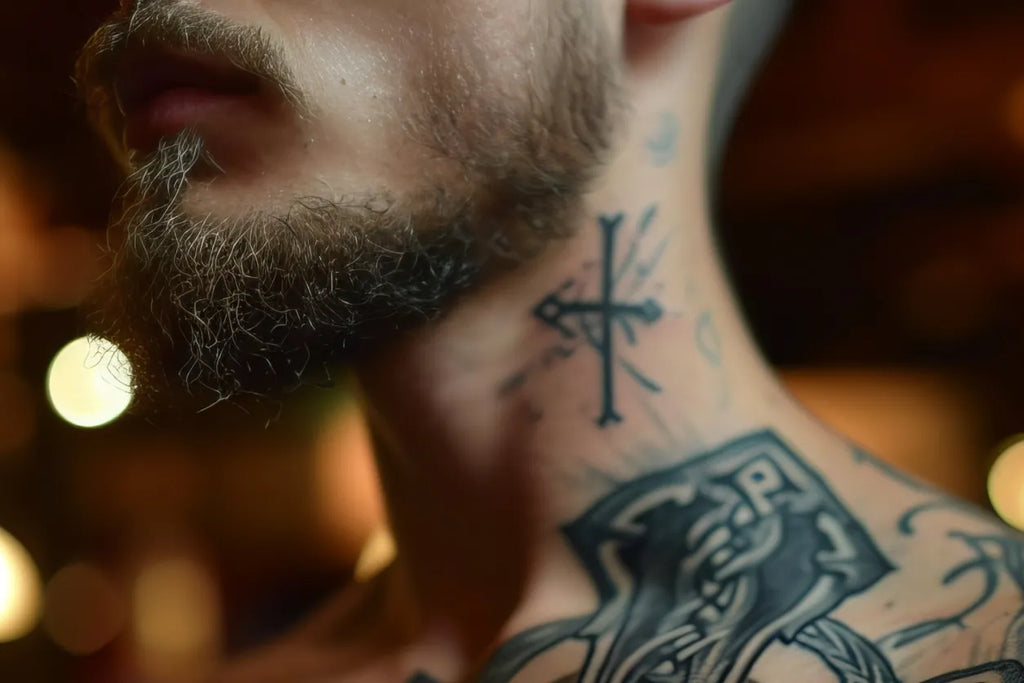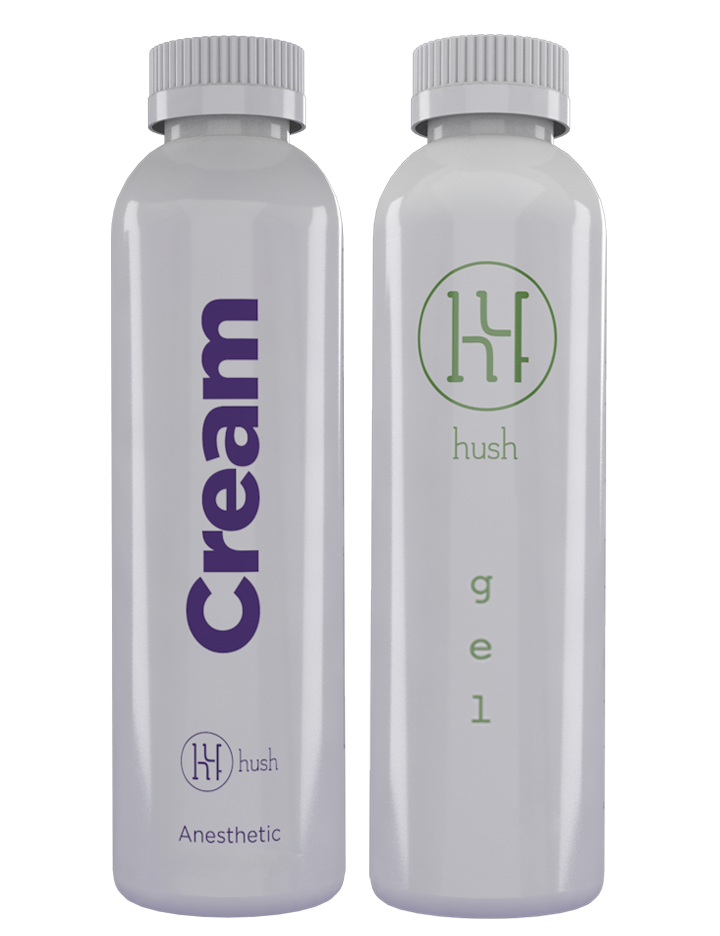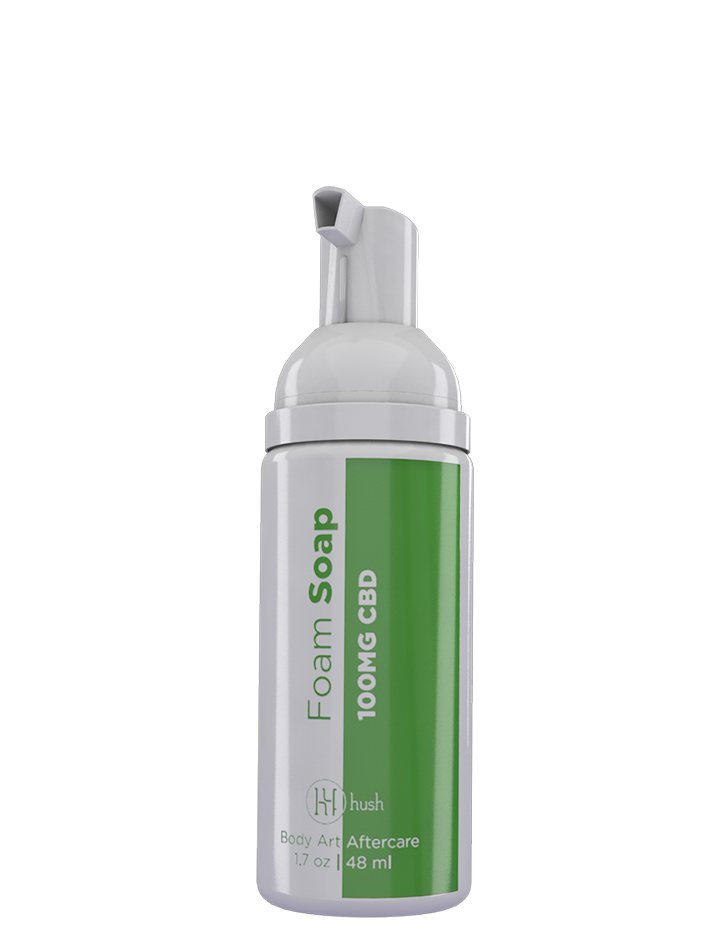You’ve probably given a lot of thought to the meaning of your tattoo. You know the message you’re trying to convey through your tattoo or have an important reason for choosing a specific piece. But what about the placement of your tattoo?
Tattoo placement meanings are very different from the meaning of your tattoos themselves, but they can still reveal a lot about who you are as a person. Here’s what to consider when picking a placement for your tattoo and how Hush can keep you comfy no matter where you decide to ink.
Feet, Shins, and Ankles
People who get tattoos that are easily covered with socks or shoes often aren’t the type to show off. These tattoos are discreet.
People usually get tattoos in these areas because they hold some kind of personal meaning. Your tattoo means a lot to you, and it doesn’t matter if other people have the chance to see it. You may be introverted, wise, and reserved if you keep your tattoos on the down low.
Upper Thigh
Upper thigh tattoos can indicate body confidence. If you have an upper thigh tattoo on display, it means that you don’t feel like you should hide that part of your body.
A lot of people who work out and spend a great deal of time taking care of themselves get upper thigh tattoos to accentuate muscles they’ve built. The primary upper thigh tattoo placement meaning is “I’m comfortable in my own skin.”
Chest Tattoos

Chest tattoos are a very bold statement. You’re placing a piece of art directly below your face, right in the eye line of everyone looking at you.
There’s a fierceness that comes with a chest tattoo, especially if it’s a large piece. You want the world to know how much your tattoo means to you. You’re leading with art, you don’t fear judgment, and you’re brave.
Chest tattoos have a special meaning for breast cancer survivors who choose to adorn their mastectomy scars with art. They also show strength and bravery, but they show something much more. They demonstrate the will to survive and the strength to persevere.
Back Tattoos
Most people go all-in with back tattoos. It’s the largest canvas on your body.
If you have a bold, intricate back tattoo, that tells the world that you’re tough. Back tattoos have been culturally important throughout time, like in the context of large traditional Japanese back tattoos that were meant to show strength.
You’re not afraid to endure countless long sessions. Back tattoos also show that you’re committed. You followed through until you filled the space in true dedication to the artistic vision you wanted to represent through your body art.
Wrist Tattoos
Wrist tattoos are sometimes used to cover up self-harm scars. A wrist tattoo can show healing from past trauma or periods of depression. Covering your scars or transforming them into something beautiful can indicate that you’ve overcome a lot and you’re in a much better place now.
Wrist tattoos can also mean that you’re sentimental. You want to keep your tattoo someplace where you can see it all the time. Your tattoo might represent a person you love or a happy memory. Just glance down for a pick-me-up.
Finger and Behind the Ear Tattoos
A tattoo on your finger or behind your ear is likely very small. It can mean that you’re classy, elegant, or conservative with just a little bit of a rebellious streak.
These tattoos aren’t a significant commitment, but they still allow for a little bit of self-expression. You might be the type of person who wants the best of both worlds, and you’ve found a way to get exactly what you want.
Forearm Tattoos
Forearm tattoos aren’t as discreet as an upper arm tattoo. Unless you wear long sleeves all the time, someone’s going to spot your forearm tattoo.
A forearm tattoo means that you’re bold enough to express yourself but reserved enough not to place your self expression front-and-center (like with a chest tattoo). You appreciate the proper balance of business and pleasure.
Neck Tattoos

Neck tattoos can go two ways. A throat tattoo or a tattoo on the front of your neck is one of the boldest statements you can make with your body art.
You want everyone to see your body art. You feel as though the statement piece you’ve chosen defines you. You’ve placed it right over your voicebox, which can symbolically represent your tattoo’s ability to speak for you.
A small tattoo on the back of your neck that can be hidden by your hairstyle lends the opposite message. It’s a small little piece of you that’s hard to see — you can’t even see it yourself. You know that it’s there, and that’s all that matters. If you want to show it off, pile your hair up into a bun. If you want to keep it lowkey, let your hair down.
Arm Tattoos
Upper arm tattoos are very traditional. It’s one of the first spots people get a tattoo. The upper arm is padded, so the area hurts a lot less. It’s also easy to hide with the sleeves on a normal t-shirt. An upper arm tattoo says you’re a pragmatist.
If you go for a whole sleeve, that’s a different story. A completed sleeve tattoo shows that you’re the kind of person who likes to finish what you start. You’re probably loyal to the things that you do. You’re willing to ride out the pain to see things through until the end.
Ribcage Tattoos
The ribcage is considered one of the most painful places to get a tattoo. It’s tender, sensitive, and close to your heart.
That’s also what your ribcage tattoo says about you. Ribcage tattoos are for strong and creative people. Creativity is tied to pain. You’re willing to endure a lot for art that you love. Maybe you even drew up your tattoo yourself.
Don’t Let Pain Stop You From Claiming Your Spot
Some tattoo spots hurt worse than others. If you really want a ribcage tattoo but know your upper arm will hurt less, don’t settle. HUSH tattoo numbing cream is here to take the ouch out of self-expression.
Slather it up, cover it, wait an hour, and you’re ready to go. Your tattoo session will fly by when HUSH takes the edge off.
Sources:
Decorative tattoos after breast cancer surgery | Breast Cancer Now
Japanese Tattoos as Fine Art | The National Arts Program Foundation




